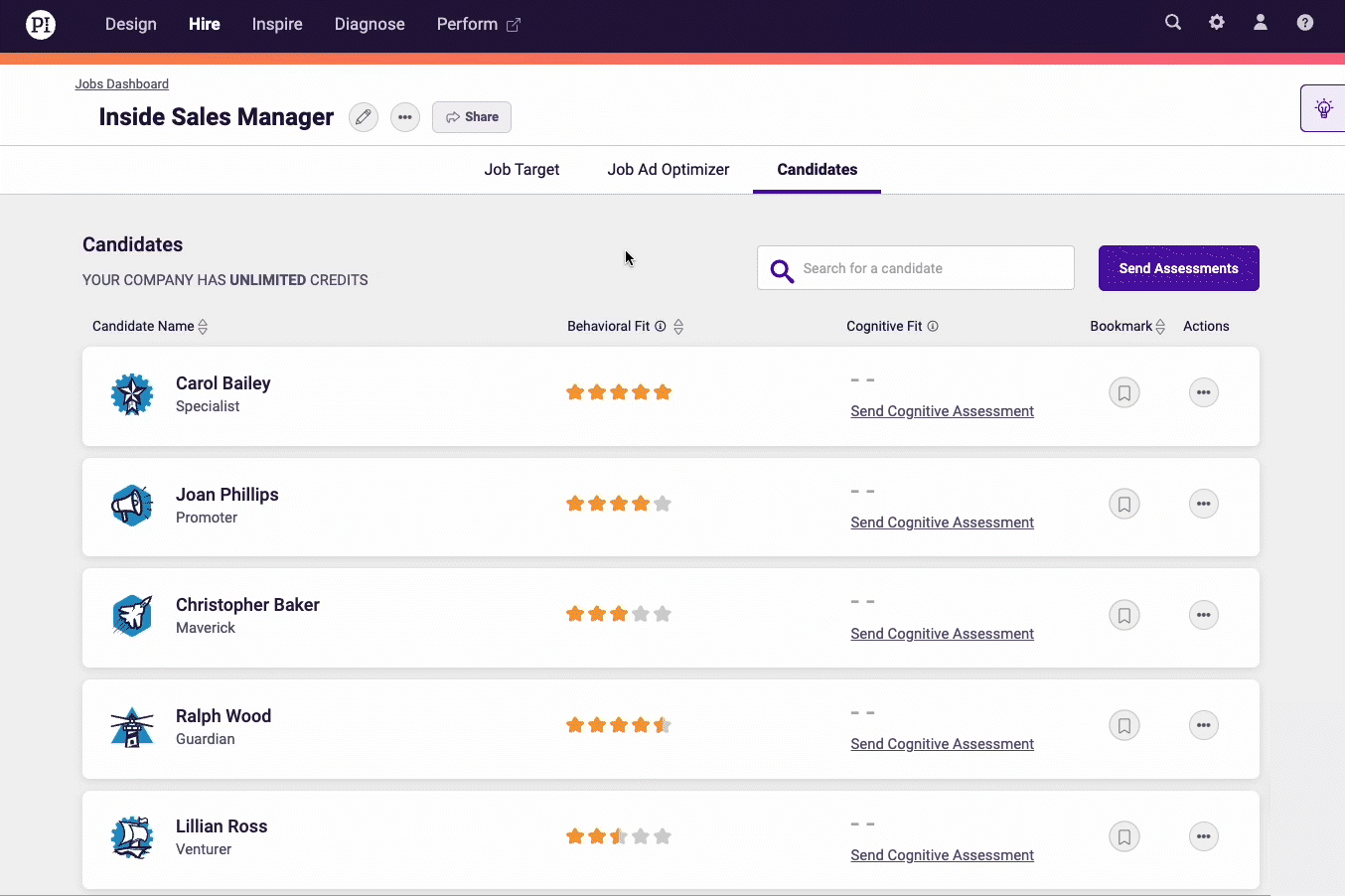When many of us think of applicant vs candidate, we generally think of someone looking for a job. And generally, we’re right!
However, while the terms “applicant” and “candidate” are frequently used interchangeably, there are some key distinctions between them that are particularly relevant for HR teams during the recruitment process.
So, who is considered an applicant, and who is considered a candidate? And what does the distinction mean to HR departments?
Think of an applicant like an egg, and a candidate as the tadpole. A candidate is further along in the hiring process. They’ve been interviewed, undergone a background check, and thoroughly vetted by HR. Essentially, they’re on the shortlist for the position.
But an applicant? They’ve only dropped off a resume or submitted an application. They’ve expressed interest in the position, but no one has expressed interest in them so far because they haven’t been thoroughly considered or interviewed.
Why is the difference relevant?
For HR professionals, where someone is in the hiring process often dictates how you communicate with them and the resources you allocate to their development. The distinction also aids in hiring metrics and analytics, such as conversion rates from applicant to candidate, candidate to interview, and interview to offer.
Understanding the difference between an applicant and a candidate enables the HR team to manage their efforts strategically, improve efficiency, enhance the candidate experience, and make more informed and confident hiring choices.
Best practices on how to manage applicants
So, how can HR teams and leaders manage applicants who haven’t yet been vetted respectfully and efficiently?
1. Acknowledge receipt quickly and clearly.
This is a simple step that too many organizations ignore—to the detriment of their brand’s reputation among prospective employees. Every applicant, regardless of their potential for hire, deserves to know whether their application was received.
To make matters easier for all involved, consider setting up an automated email confirmation to be sent immediately, clearly informing applicants of what they can expect next. For example, the confirmation email may say, “Thank you for your submission. If your qualifications match what we’re looking for, you can expect to hear from us in one to two weeks.”
This message manages the applicant’s expectations while also respecting the effort the individual has invested in applying.
2. Maintain transparency on next steps.
Maintain transparency at every step. Be upfront about the recruitment process; if the application will be reviewed in the next two weeks, state that clearly. Will qualified applicants be contacted for a phone screening within three weeks? Will they need to complete a personality assessment?
Whatever your organization’s process, make sure it’s clear to all applicants. Even a generic message stating that the applicant should keep looking for other positions if they haven’t heard from you in four weeks is better than silence. No one wants to feel ghosted, especially when it’s your potential livelihood on the line.
3. Use clear, objective screening criteria when evaluating.
To transition applicants to candidates fairly and efficiently, establish objective criteria for the initial screening process.
For example, you could consider minimum qualifications, like:
- A specific degree
- Certain certifications
- Years of experience
- Essential skills (proficiency with a specific software, like Outlook)
- Match Score*
Automate some of this preliminary filtering with Applicant Tracking Systems (ATS) to streamline the process and maintain consistency. This also reduces any potential unconscious bias in the early stages of the recruitment journey and frees up the HR team to focus only on the most likely candidates.
*Match Score is a helpful organizing tool that ranks options, allowing you to focus on a smaller set of candidates when using the Predictive Index for hiring and selection.

4. Provide respectful and timely closure.
If an applicant isn’t selected, they deserve to know. Demonstrate your organization’s professionalism and respect by responding promptly via email or phone. Depending on the size of your organization and its resources, this process can be automated; however, it must be clear, polite, and definitive.
Don’t lead an applicant on with false promises if they’re truly not the right fit for the role. Thank them for their effort and wish them the best in their future endeavours.
If you know an applicant won’t be moving forward, don’t delay informing them so that they can move on and continue their search. This helps your brand maintain a positive image in the eyes of non-selected applicants who could one day become employees, customers, or even advocates.
Best practices on how to manage candidates
Once applicants have passed the initial screening and are in active consideration, they become candidates.
1. Personalized and proactive communication
While candidates and applicants should both be treated with the utmost respect and thoughtfulness, candidates have earned a much more personalized communication strategy.
Assign a member of your HR team to be the candidate’s point of contact—someone they can communicate directly with who can answer any questions they have and provide any updates.
It’s also essential that this communication not only be personalized but also proactive, and that means reaching out to the candidate before they feel compelled to follow up.
Provide clear timelines and next steps, along with the names of the individuals they will be meeting with. This shows respect for the candidate’s time and clear investment in the process—before even being hired, the candidate can clearly see that your organization values them and their time.
2. Provide detailed information on the process.
Clearly outline all of the next steps in the process.
How many interviews can they expect? Who will be doing the interviewing? What is the interviewer’s role, and what kinds of things will be discussed? Will the candidate have any assessments to complete, and what will those assessments evaluate? How long does each step in the process take?
This transparency takes away the guesswork by setting realistic expectations, which, in turn, reduces anxiety and enables the candidate to prepare to the best of their ability.
3. Ensure the process is well-organized and efficient.
Minimize any delays or friction with swift scheduling: Ensure interviewers are prepared and on time, avoid redundant requests, and make decisions in a timely manner.
A disorganized process, such as repeated requests for the same information, last-minute interview cancellations, and long wait times, reflects poorly on both your HR team and your organization as a whole. An otherwise promising candidate could be so turned off that they lose interest in the position and tell everyone who will listen about your organization’s inefficient and disrespectful candidate experience.
However, on the other hand, an incredibly well-organized process demonstrates your professionalism and conveys your respect for the potential new team member, exactly what you want both applicants and candidates to shout from the rooftops about your brand.
4. Establish a feedback loop.
While this may not be possible for every organization due to resources, candidate volume, or legal constraints, endeavour to offer constructive feedback to candidates, especially after an interview. This further personalizes the process and lets the candidate know they’re valued. It shows your commitment to their personal and professional development, even if they are ultimately not selected.
Their direct contact or interviewer could give them a personalized phone call or email to explain why they were not chosen for the position, such as if another candidate simply had more relevant experience. What else could the candidate work on in the future? This way, the entire process can feel like a positive learning experience, even in the event of rejection.
5. Treat candidates like valued colleagues (or future) colleagues.
Show the candidate the same care, respect, and professionalism you would to any of your current fellow team members. This includes being on time and engaged during interviews, showing genuine interest in what they hope to achieve, and taking the time to thoughtfully answer any and all of their questions.
If the candidate is accepted, make the transition from candidate to fully-fledged team member as seamless and welcoming as possible. And this begins with pre-onboarding, which will make them feel like part of the team even before their first day on the job. This sets the tone for the candidate’s (now employee’s) future with the company and strengthens your overall company culture.
Learn How to design your new employee onboarding process.
Streamline the journey from applicant to candidate.
Utilize Predictive Index to unlock effective hiring practices that streamline the journey from applicant to candidate to full-fledged team member.
Use PI to:
- Align the HR team on your data-driven Job Target: PI makes it easy to get the entire HR team on the same page about the specific cognitive abilities and behavioral drives required for success in any role.
- Optimize your job ad for clarity: Leverage the insights from your PI Job Target to craft job descriptions that accurately reflect the role’s behavioral and cognitive demands, setting realistic and appropriate expectations from the jump. This clarity will help attract applicants who are a natural fit for the job and reduce applications from individuals who aren’t the right fit.
- Utilize behavioral and cognitive assessments for early, objective screening: Use PI’s behavioral and cognitive assessments early in your screening process to quickly and objectively identify if an applicant has the right cognitive speeds and behavioral drives for the demands of the job, saving you time spent on interviewing poor-fit applicants.
Leverage our assessments and tap into the full power of hiring with PI to transform your hiring practices.







